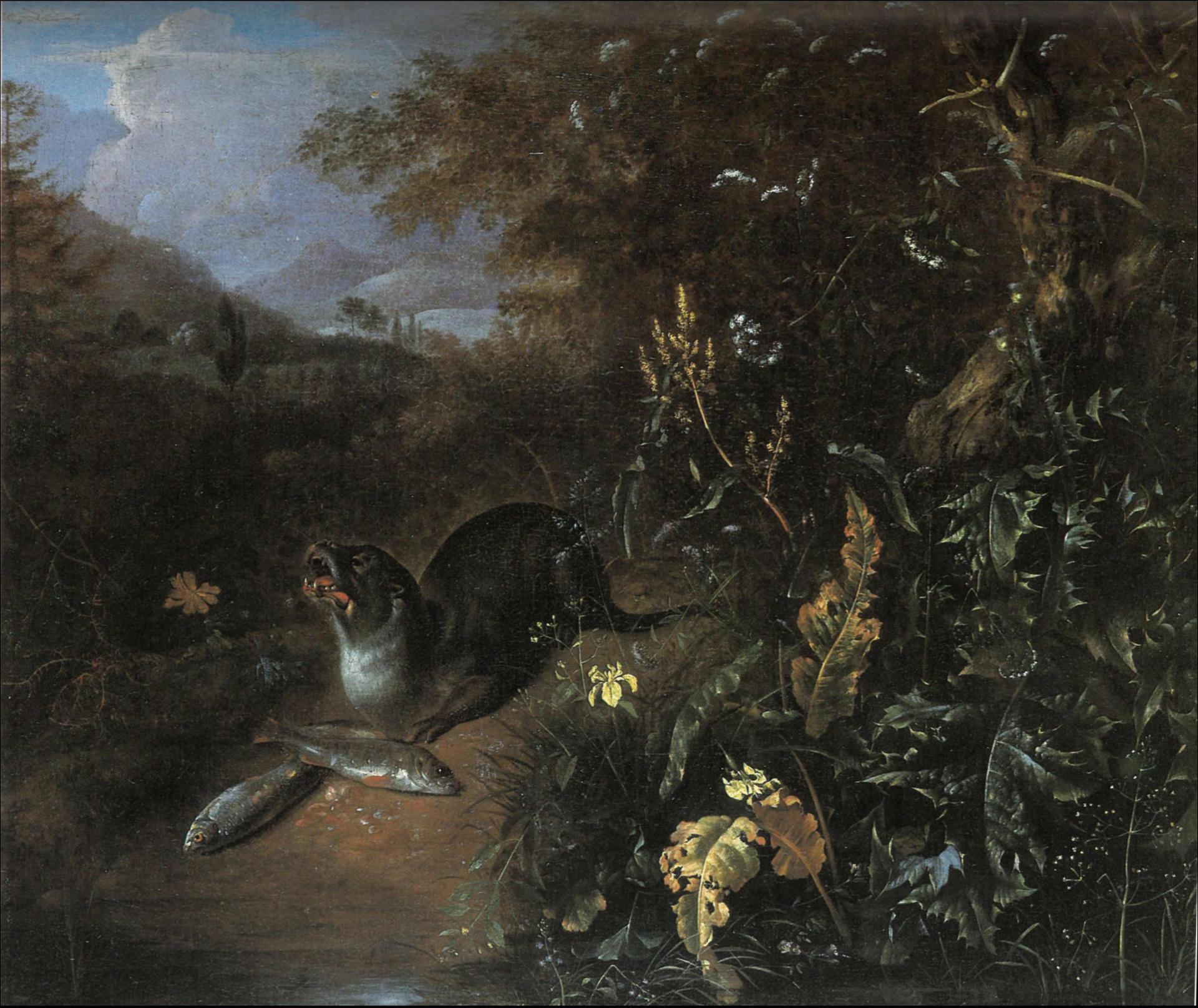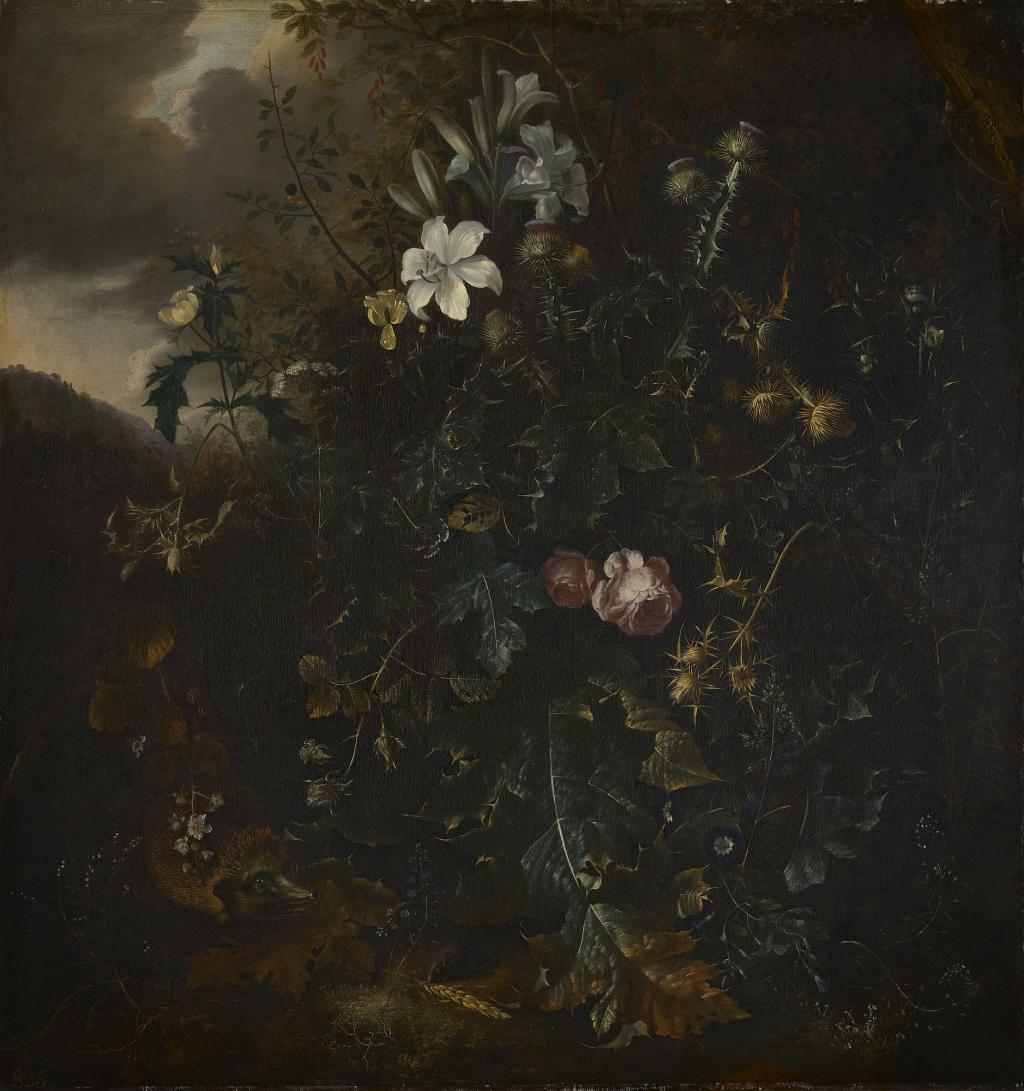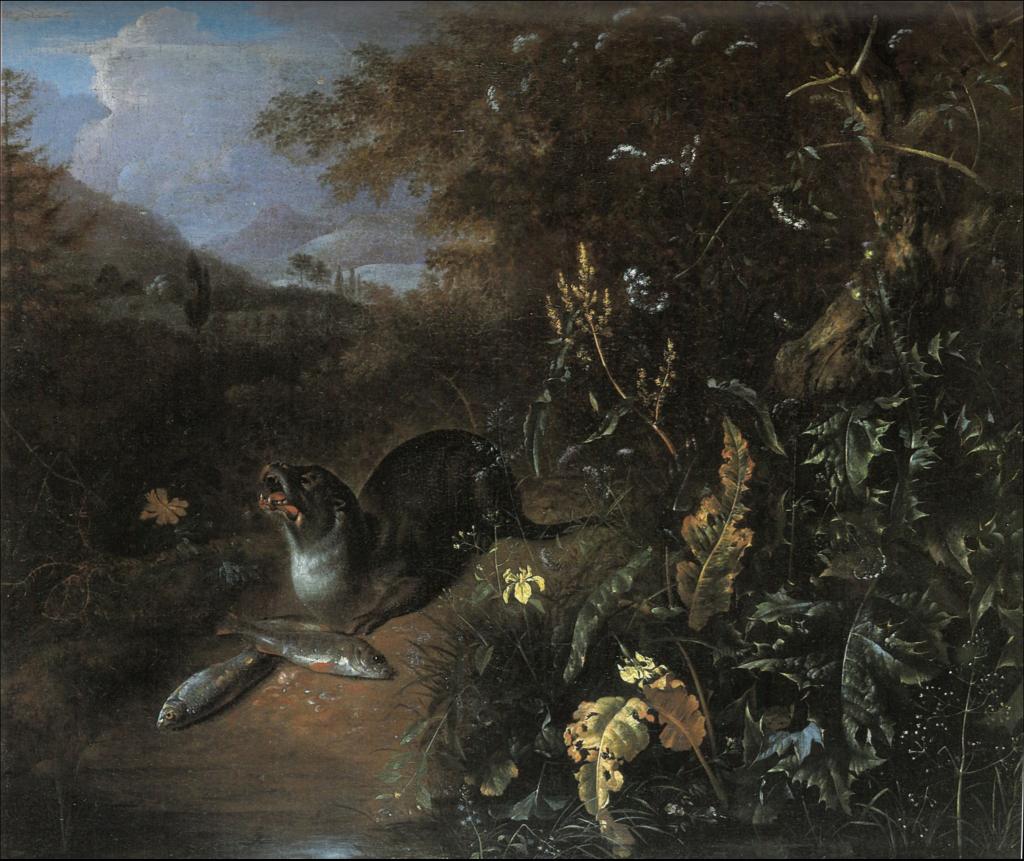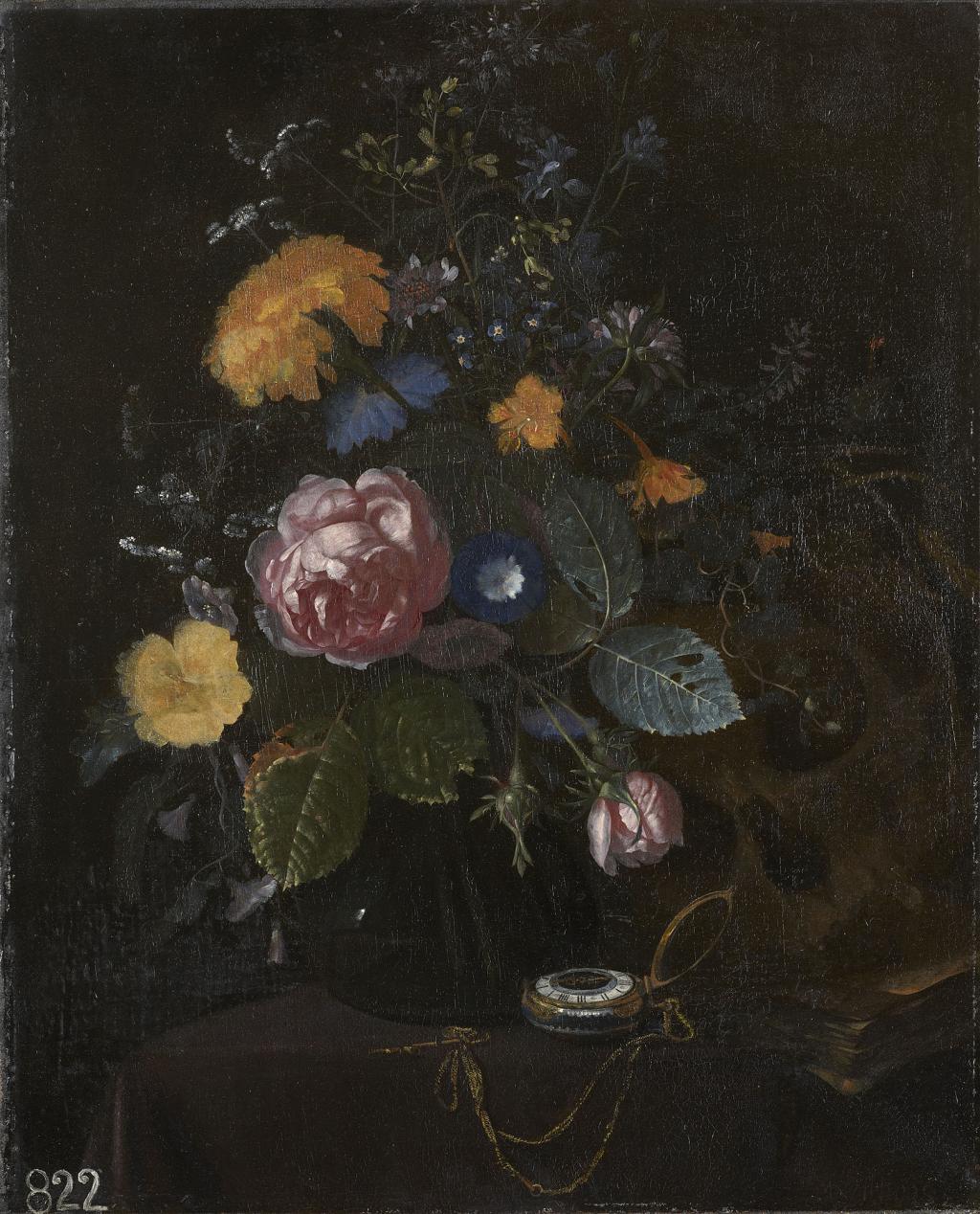Painting in the collection of King Charles II identified

It was recently discovered that an exceptional painting by the Amersfoort master Matthias Withoos (c. 1627-1703), Forest Still Life with an Otter and two Fish, was once part of the British Royal Collection. This contribution explains how this work could be identified and why it may have been disposed of later. The discovery was made during the Gerson Digital: Britain research project, which started in 2022.
spotlight
The collecting history of Netherlandish art abroad is an important part of the Gerson project.1 While researching seventeenth-century Dutch paintings in the United Kingdom, we came across mention of two paintings by Matthias Withoos in the inventory of King James II's collection (ruled 1685-1688). The first painting is listed as no. 454, ‘By W. Withoes. A piece with thistles, an otter, and two fishes’ and was located ‘in Store above stairs over the New Lodgings, Whitehal’. The second work, no. 768, is described as: 'Withoes. A piece with thistles and flowers, a hedge-hog in it', and was hung in the Queen's Drawing Room, Windsor Castle.2 The latter work is still part of the Royal Collection (fig. 1).3 It is marked 'MWithoos Amervoort Ao 1665', meaning Withoos made the painting in 1665 in his hometown of Amersfoort, where he had resettled after spending several years in France and Italy. The former painting, the depiction of an otter with two fish near thorn bushes, no longer appears in the Royal Collection. It also remained unidentified until now. However, the very specific description of the unusual subject matter made it seem worth a try to identify the work.
Creepy creatures in the forest
Withoos specialised in ‘forest floor still lifes’, like the better-known painter Otto Marseus van Schrieck (c. 1619/20-1678), with whom he had travelled to Italy, where the new genre was called 'sottobosco'. In this type of still life, flowering plants and hunting animals are placed in their natural context, on a forest floor. Of the more than 90 forest floor still lifes known from Withoos, more than 40 are signed.4 The animals on the forest floors are usually hedgehogs, lizards, snakes, mice, frogs and insects, and in a few cases a weasel, marten, polecat or an otter, which are intended as a 'repulsive' contrast to the beautiful and attractive elements of the depiction. Only seven forest floor still lifes in Withoos' known oeuvre include an otter, only one of which exactly matches the description 'A piece with thistles, an otter, and two fishes' (fig. 2). Like the forest still life with the hedgehog in the Royal Collection, this painting is signed and dated 1665.5
Both 1665 works were acquired by Charles II not long after they were made in Amersfoort. They are described in Charles II's inventory as no. 606 and 607.6 The description of the latter reads: ‘Whithoos. A Landskip wherein are thistles, & flowers, an otter, and two fishes by it’. The dimensions of 1 ft 6 in x 1 ft 9 in correspond to the work identified here. The two paintings differ greatly in both subject matter and size. It was clearly never intended to hang them together, even though they were probably bought at the same time. The work with the otter in landscape format is almost four times smaller than the other piece, which has a portrait format. The hedgehog in the large painting is subordinate in the depiction, lurking in the shadows of the plants and flowers, while the roaring otter and its fishing in the small piece are placed right in the full light. It is not clear exactly when the smaller piece was withdrawn from the royal collections. The disposal of the work will no doubt have been related to its subject matter, which was presumably perceived as repulsive. It was last recorded in the Royal Collection in 1714, in the inventory of Queen Anne's collection at Somerset House.7 There, as at the time of James II, it was kept in storage, unlike the other painting by Withoos in the collection, which was found agreeable. That there was an appreciation for the artist but not so much for the subject with the otter is shown by the acquisition of a third work by Withoos in the Royal Collection, a floral still life, presumably acquired by Queen Anne (fig. 3), together with a floral piece by the already-mentioned Marseus van Schrieck, which was to serve as its counterpart.






Unique pictures
Although Withoos did incorporate many of the same elements in his forest still lifes, he did his utmost to vary greatly, both in his compositions and by choosing different formats. We know of no different versions of almost identical works by Withoos. Therefore, we can state with reasonable certainty that the painting with the otter and two fish, which was part of the royal collections from the reign of Charles II to that of Queen Anne, is identical to the 1665 dated work (fig. 2). It was not until 1964, 250 years after its last entry in the Royal Collection, that the painting resurfaced at an auction in London.8 A similar depiction of an otter by Withoos did appear at auctions in London in 1830 and 1835, however, with no mention of the number of fish nor indication of sizes, making identification with the Royal Collection work impossible.9 Finally, the painting reappeared in an auction in New York in 1982, before being auctioned again in London in 1984.10 After this, nothing is known to us about its whereabouts

